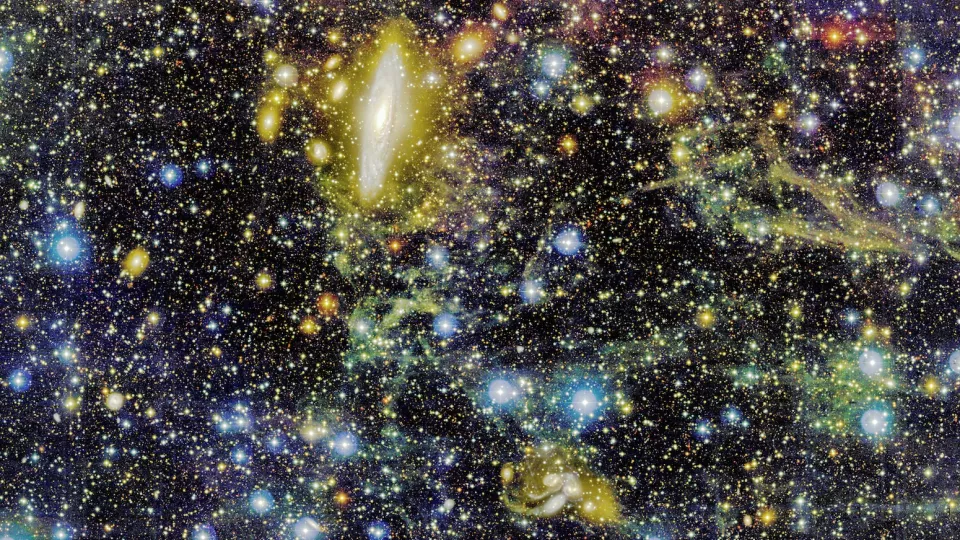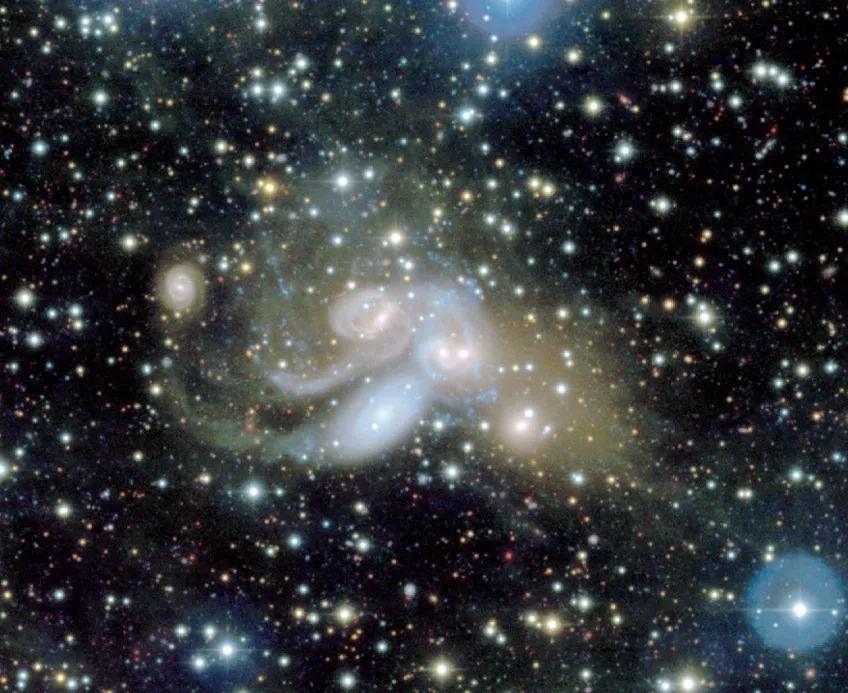At a distance of approximately 250 million light years from our planet lies a galaxy cluster called Stephan’s Quintet. It consists of several colliding galaxies and is found in the Pegasus constellation. In a new study, astronomers have studied the state of the cluster more closely.
The study reveals structures that have not been seen before. Of particular interest is the discovery of a very large red halo, created by remnants of old stars. The halo is centred around one of the five galaxies.
“The galaxies part of Stephan’s Quintet are unusually close together, which means they interact with each other”, says Florent Renaud, astronomer at Lund University in Sweden.
The proximity between the five colliding galaxies creates gravitational disturbances and instability. The remnants of the old stars, which have ended up between the galaxies, are a sign of this. These remnants have been torn apart from their respective galaxies during periods of particularly severe gravitational disturbances.
“This process is a form of galactic cannibalism”, explains Florent Renaud.
The five galaxies are drawn closer and closer together. In the end, after a number of clashes, they will form one giant galaxy. According to Florent Renaud’s assessment, this will take place in a few hundred million years from now.
Although the galaxy cluster has already been studied in some detail – especially thanks to the Hubble Space Telescope – the new colourful photos from a telescope in Hawaii shed new light on the galaxy, and give researchers new clues as to what is taking place in this complicated system.
In particular, the galaxy with the newly discovered red halo has previously been assigned a more insignificant role in interpretations of the galaxies’ collisions. Therefore, the results from the study also indicate that the galaxy cluster is older than previously believed.
This means that researchers now have to revise their models for how the system was formed and developed. This branch of astronomy research, in which researchers try to reconstruct the history of galaxies by discovering larger and unclear structures surrounding the galaxies, is often referred to as galactic archaeology.
Facts about Stephan’s Quintet:
This galaxy cluster is famous for its variety of beautiful galaxies, most of which are shaped like spirals. The galaxy was discovered in 1877 by a French astronomer, Edouard Stephan, and has since then turned into the most studies of all galaxy clusters.
Publication: Revisiting Stephan's Quintet with deep optical images
Contact:
Florent Renaud (speaks English and French)
Department of Astronomy and Theoretical Physics, Lund University
+46 (0)739 53 90 74
florent [dot] renaud [at] astro [dot] lu [dot] se

